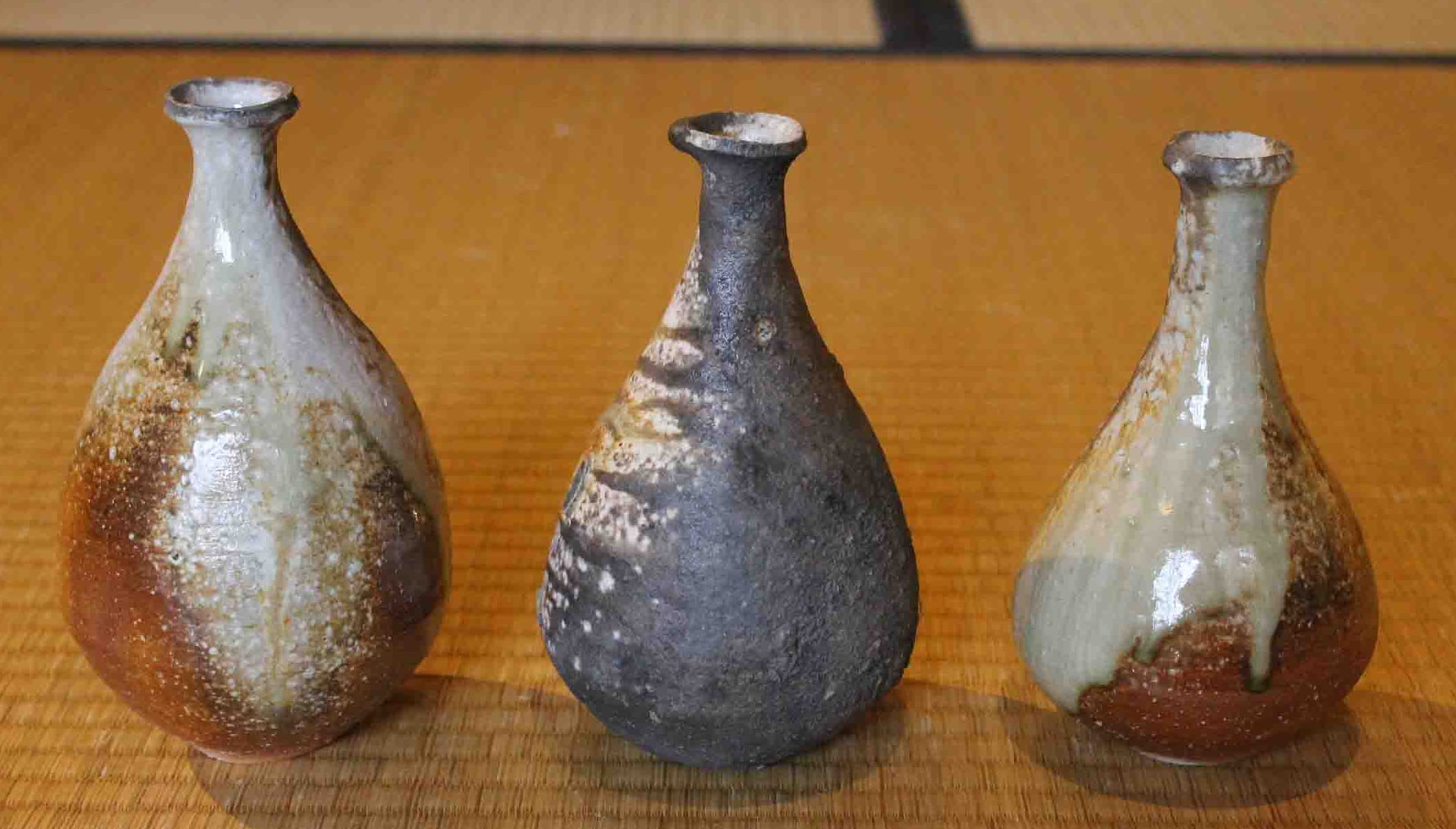Embark on a journey into the heart of Japanese sake culture and uncover the secrets of the tokkuri, the traditional vessel designed for serving this revered beverage. Whether you’re a seasoned sake enthusiast or just beginning your exploration, this guide will illuminate the history, craftsmanship, and significance of the tokkuri in enriching your sake experience. From selecting the ideal tokkuri to mastering the art of pouring, we’ll equip you with the knowledge to elevate your sake ritual.
Choosing the Perfect Sake Vessel
The tokkuri. It’s not merely a flask; it’s a vital component of the complete sake experience, much like the right wine glass enhances the nuances of wine. This guide will navigate you through everything tokkuri, from their rich history and intricate craftsmanship to selecting the perfect vessel to complement your style and elevate your sake enjoyment.
A Tokkuri Through Time
Tokkuri boast a centuries-old history, deeply intertwined with traditional Japanese ceremonies. Their evolution reflects the changing tides of Japanese culture, yet their place in the sake ritual remains sacred. It’s remarkable how such a simple vessel holds such a rich historical narrative. Researchers are currently exploring the earliest uses of tokkuri, and preliminary findings suggest they may have been used for other liquids before becoming primarily associated with sake. Future discoveries may shed even more light on this fascinating history.
Exploring Tokkuri Materials
Just as a skilled chef selects the right cookware, the material of your tokkuri significantly impacts the sake experience. Each material possesses unique properties that influence the taste, aroma, and overall sensory perception of the sake.
- Ceramic: This classic choice, encompassing porcelain and stoneware, is renowned for its heat retention, making it perfect for serving warm sake. The variety of styles ensures you’ll find one that resonates with your aesthetic preferences.
- Wood: The earthy tones of traditional wooden tokkuri often beautifully complement the flavor profile of sake brewed in wooden casks, creating a harmonious pairing. Some experts believe that wood may subtly enhance the earthy notes of certain sake varieties, though this remains an area of ongoing research.
- Glass: A glass tokkuri allows you to fully appreciate the visual beauty of your sake, showcasing its color and clarity, especially with premium varieties. The sleek and modern designs of glass tokkuri can add a contemporary touch to your sake service.
- Metal (Bronze, Tin): Less common but historically significant, metal tokkuri offer excellent temperature control and a unique aesthetic. Some antique tokkuri are highly sought after by collectors.
- Ika Tokkuri (Dried Squid): A rare and unusual type of tokkuri crafted from a dried squid, showcasing the creativity and artistry of Japanese craftsmanship.
Tokkuri Shapes and Their Purpose
Tokkuri come in a diverse array of shapes, each designed with specific advantages. Some prioritize heat retention, while others focus on controlled pouring, much like selecting the right tool for a specific task.
- Bulbous Tokkuri (rounded at the bottom with a thin neck): This classic, rounded shape excels at retaining heat, making it ideal for serving warm sake. The narrow neck prevents spills and allows for a controlled pour. This is often preferred in more formal or traditional settings, where precise pouring is part of the ritual.
- Katakuchi Tokkuri: Characterized by a wider mouth and often a small spout or lip (Katakuchi literally translates to “spouted vessel”), this design is well-suited for chilled or room-temperature sake, allowing for quicker serving and easier cleanup. It’s often used in casual settings and comes in various shapes and materials. Learn more about the distinctions between tokkuri and katakuchi.
The Ritual of Sake
Serving sake from a tokkuri is a time-honored ritual with its own set of traditions and etiquette. Traditionally, warming sake in a tokkuri involves gently heating it in a hot water bath, never directly on a flame. Proper pouring techniques, often involving mutual pouring between host and guest, are integral to the experience, adding a touch of elegance and reinforcing social bonds. The size and shape of the tokkuri are often carefully chosen to complement specific sake cups (ochoko), creating a harmonious balance.
Tokkuri in the Modern World
Tokkuri are experiencing a renaissance in the modern world, transcending traditional boundaries. Mixologists are incorporating them into innovative cocktails, while designers are reimagining the classic form with sleek lines and vibrant colors. They’re even being used for other beverages like infused waters, teas, and even waftsfroms, showcasing their versatility. It’s inspiring to witness how a traditional object can be reinterpreted in new and exciting ways.
Finding Your Perfect Tokkuri
Choosing a tokkuri can be a rewarding experience. Reflect on your priorities: Do you gravitate towards a traditional aesthetic or a modern design? Will you primarily be serving warm or cold sake? Consider the number of guests and the overall atmosphere you wish to create. Here’s a simple guide to assist you:
| Feature | Consideration |
|---|---|
| Material | Ceramic retains heat, wood complements aged sake, glass showcases clarity, metal offers temperature control. |
| Shape | Bulbous for warmth, Katakuchi for controlled pouring of chilled sake, and other shapes for aesthetics. |
| Size | Consider the number of guests and serving style. Typical sizes range from 1 go (180ml) to 1 sho (1.8L), with 1-2 go being the most common. |
| Style | Traditional or modern, plain or decorated. |
Whether you’re a sake connoisseur or embarking on your sake journey, selecting the right tokkuri can profoundly elevate your experience. It’s an opportunity to express your individual style and infuse your sake ritual with a touch of Japanese tradition. Take your time, explore the myriad options, and discover the tokkuri that speaks to you. If you are looking for a place in Arizona to see the natural beauty of the state, you can check out the Toroweap Overlook in Grand Canyon National Park. It’s a great place to get away from the crowds and see a different side of the canyon. Cheers to finding the perfect vessel for your sake adventures!
What is a Tokkuri Used For?
The tokkuri, a graceful vessel often seen alongside sake, is more than just a beautiful serving piece. Its primary function is to present sake, whether warmed or at room temperature. The slender neck and bulbous base are specifically designed for temperature control, retaining heat for warm sake and preventing rapid warming of chilled sake.
Using a tokkuri elevates the sake experience, adding a touch of ceremony and tradition. It transforms a simple drink into a mindful ritual, enriching the sensory experience.
The diverse range of shapes, sizes, and materials ensures you’ll find a tokkuri that complements both your personal style and the specific sake you’re serving. While sake is its primary purpose, the tokkuri’s versatility extends to other beverages like shochu, umeshu, or even water.
Some experts suggest that the material of the tokkuri can subtly influence the sake’s flavor profile. For instance, clay tokkuri might enhance the earthy notes of certain sake varieties. This complex relationship between the vessel and the beverage is an area of ongoing research, with studies exploring the nuanced effects of different tokkuri designs on the perception of taste and aroma.
| Use | Description |
|---|---|
| Serving Sake | Designed for serving sake, both warm and chilled/room temperature. |
| Temperature Control | The shape optimizes heat retention for warm sake and prevents rapid warming of chilled sake. |
| Ritual & Tradition | Enhances the ceremonial aspect of sake drinking, adding a touch of elegance and mindfulness. |
| Aesthetic Appeal | Offers a wide variety of designs and materials, complementing different sake types and personal aesthetics. |
| Versatility | Can serve other beverages like shochu, umeshu, or water, adding a touch of refinement. |
What Does “Tokkuri” Mean?
The word tokkuri (徳利) refers to the traditional Japanese serving vessel specifically designed for sake. Its purpose is to facilitate the pouring and sharing of sake, a central element of Japanese drinking culture. Unlike a wine decanter, its primary function is not aeration. Instead, it focuses on controlled pouring and temperature maintenance.
The etymology of “tokkuri” is thought to be onomatopoeic, mimicking the “tokku-tokku” sound of sake being poured. Another theory suggests a link to the Korean word “Tokkuru,” meaning sake pot. Further research may illuminate its precise origins.
The tokkuri’s narrow neck enables precise pouring, which is essential in formal Japanese settings. It facilitates the graceful filling of small ochoko cups, fostering a shared drinking experience that strengthens social bonds.
Temperature control is another key function. The tokkuri’s material, often ceramic or porcelain, insulates the sake, maintaining its desired temperature, whether warm, room temperature, or chilled.
| Feature | Benefit |
|---|---|
| Narrow Neck | Controlled pouring, Elegance |
| Material | Temperature regulation, Insulation |
| Design | Facilitates sharing, enhances the social ritual |
While the core function of the tokkuri remains consistent, variations exist in shape, size, and material, offering a diverse selection to complement different occasions, sake types, and personal preferences. Some theories suggest that the shape may subtly influence the perceived taste of the sake, although this remains a topic of ongoing research and debate.
Tokkuri vs. Katakuchi: Choosing the Right Sake Server
While both tokkuri and katakuchi serve sake, their distinct characteristics make them suitable for different occasions and sake temperatures. Understanding these differences is key to selecting the perfect sake server for your needs.
Tokkuri:
- Shape: Bulbous body with a narrow neck.
- Ideal Temperature: Suitable for both warm and cold sake, but excels at maintaining the temperature of warm sake due to its insulating properties.
- Traditional Use: Often used in formal or ceremonial settings, emphasizing precise pouring and tradition.
Katakuchi:
- Shape: Wide-mouthed, often with a spout or lip, and can come in various forms.
- Ideal Temperature: Better suited for chilled or room-temperature sake due to the wider opening, which allows for faster cooling and easier serving.
- Modern Use: Considered a more modern and versatile choice, often used in casual settings where quick serving and easy pouring are prioritized.
| Feature | Tokkuri | Katakuchi |
|---|---|---|
| Shape | Narrow neck, rounded body | Wide mouth, various shapes |
| Ideal Temperature | Warm or Cold (better for warm) | Chilled or Room Temperature |
| Heat Retention | Excellent | Poor |
| Tradition | Ceremonial, formal | Everyday, casual |
| Material | Typically ceramic/porcelain | Diverse (ceramic, metal, glass) |
The shape of each vessel can also influence the perception of aroma. The tokkuri’s narrow neck tends to concentrate the aromas, while the katakuchi’s wider mouth allows for a more dispersed aromatic experience.
Choosing between a tokkuri and katakuchi depends on the temperature of your sake and the desired experience. For traditional warm sake service, the tokkuri is the classic choice. For chilled sake and casual gatherings, the katakuchi offers a convenient and modern alternative. Ultimately, the best choice is the one that best suits your personal preferences and complements your sake ritual.
- Unlock Elemental 2 Secrets: Actionable Insights Now - April 2, 2025
- Lot’s Wife’s Name: Unveiling the Mystery of Sodom’s Fall - April 2, 2025
- Photocell Sensors: A Complete Guide for Selection and Implementation - April 2, 2025
















